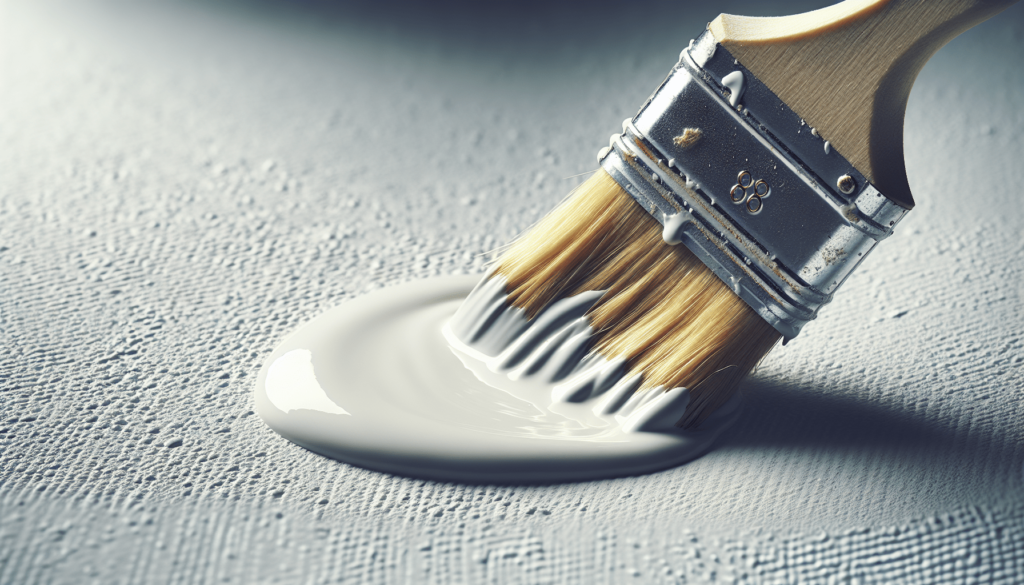In the realm of home improvement and professional painting projects, a common query arises: can you apply water-based paint over an oil-based primer? Understanding the compatibility and preparation involved in this process is essential for achieving a successful finish. When you properly prep and prime the surface, the water-based paint can adhere effectively to the oil-based primer, ensuring durability and a polished appearance. This article provides a concise yet comprehensive guide on the steps you need to follow, the materials required, and best practices to ensure your painting project yields the best possible results. Have you ever wondered if you can apply water-based paint over an oil-based primer? This common question often arises during renovation projects or DIY tasks when you are thinking of refreshing your walls, furniture, or other surfaces. Understanding the compatibility between different types of paints and primers is crucial to achieving a durable and aesthetically pleasing result.
Understanding Paint and Primer Basics
Before diving into the specifics of combining water-based paint with an oil-based primer, it’s essential to grasp the fundamental differences between these products.
What is Primer?
Primer is a preparatory coating applied to surfaces before painting. Its primary purpose is to ensure optimal adhesion of paint to the surface, increase the durability of the paint job, and provide additional protection to the material being painted.
What is Oil-Based Primer?
Oil-based primers are known for their excellent stain-blocking properties and durability. They are ideal for sealing porous surfaces, blocking stains, and providing a robust foundation for oil-based paints.
What is Water-Based Paint?
Water-based paints, also known as latex paints, are popular for their ease of use, quick drying times, and low levels of volatile organic compounds (VOCs). They are versatile and can be used on various surfaces, making them a favorite among DIY enthusiasts and professional painters alike.
Compatibility: Water-Based Paint Over Oil-Based Primer
Can You Apply Water-Based Paint Over Oil-Based Primer?
Yes, you can apply water-based paint over oil-based primer, but it’s essential to follow proper preparation and application techniques to ensure the best results. The combination can be beneficial, as oil-based primer offers a solid base while water-based paint provides a desirable finish and easier cleanup.
Why Would You Combine the Two?
Combining oil-based primer with water-based paint can be beneficial in several scenarios:
- Stain Blocking: Oil-based primers are exceptional at blocking stains, making them ideal for surfaces with water damage, smoke stains, or tannin-rich woods.
- Durability: The hard and durable finish of oil-based primers provides a sturdy foundation, especially for high-traffic areas or surfaces requiring additional protection.
- Ease of Use: Water-based paints are easier to work with, cleanup is more straightforward, and they emit fewer odors compared to oil-based paints.

Steps for Successfully Applying Water-Based Paint Over Oil-Based Primer
To ensure that your project turns out perfectly, you need to follow a detailed process.
Step 1: Surface Preparation
Proper preparation is key to the success of any painting project. Here’s how to prepare your surface:
- Clean the Surface: Use a mixture of soap and water to clean the surface thoroughly, removing any dirt, grease, or dust.
- Sanding: Lightly sand the oil-based primer with fine-grit sandpaper (220 grit) to create a slightly rough texture. This will help the water-based paint adhere better to the primer.
- Dust Removal: After sanding, remove any dust using a tack cloth. Ensuring a dust-free surface is crucial for a smooth finish.
Step 2: Priming (If Necessary)
If the surface was previously unprimed or you need additional stain-blocking, you might need to apply another coat of oil-based primer.
- Apply the Primer: Use a quality brush or roller to apply the primer evenly. Ensure you follow the product’s instructions for drying times and application techniques.
Step 3: Applying Water-Based Paint
- Selecting the Right Paint: Choose a high-quality water-based paint suitable for your specific project needs (e.g., indoor, outdoor, trim, wall).
- Mixing the Paint: Stir the paint well before application to ensure even color and consistency.
- First Coat: Apply the first coat of water-based paint using a brush or roller. Ensure even strokes and avoid overloading the brush or roller with paint.
- Drying Time: Allow adequate drying time between coats as recommended by the paint manufacturer.
- Additional Coats: Apply additional coats as necessary to achieve the desired coverage and finish.
Common Mistakes to Avoid
- Skipping Sanding: Not sanding the oil-based primer can lead to poor adhesion of the water-based paint.
- Ignoring Drying Times: Rushing the drying process between coats can cause uneven textures and peeling.
- Inadequate Cleaning: Failing to properly clean the surface before painting can impact the paint’s ability to adhere effectively.
Advantages and Disadvantages of Combining Paint Types
Understanding the pros and cons of combining water-based paint with an oil-based primer will help you make an informed decision.
Advantages
| Advantage | Description |
|---|---|
| Stain Resistance | Oil-based primers can effectively block tough stains from bleeding through. |
| Durability | Provides a hard, durable base that extends the life of the paint job. |
| Versatility | Allows you to use water-based paint, which is easier to work with. |
Disadvantages
| Disadvantage | Description |
|---|---|
| Longer Preparation | Requires proper surface preparation and adherence to drying times. |
| Potential Adhesion Issues | If not prepared correctly, water-based paint may not adhere well. |
| Odor from Primer | Oil-based primers can emit stronger odors during application. |

Examples of Suitable Surfaces for This Combination
Some surfaces are particularly well-suited for the combination of oil-based primer and water-based paint, while others might require different approaches.
Interior Walls
In older homes, walls may have been previously painted with oil-based products. Using an oil-based primer followed by water-based paint can refresh the appearance while ensuring durability.
Stained Wood
Stained wood surfaces, such as trim or cabinetry, benefit greatly from the stain-blocking qualities of an oil-based primer, followed by the aesthetic finish of water-based paint.
High-Humidity Areas
Oil-based primers can be particularly useful in high-humidity areas, such as bathrooms or kitchens, where stain resistance and moisture protection are crucial.
Troubleshooting Common Issues
Even with the best preparation, issues can arise. Here’s how to address some common problems:
Peeling Paint
- Cause: Poor adhesion due to inadequate surface preparation or drying.
- Solution: Thoroughly sand and clean the area, then reapply the primer and paint.
Uneven Finish
- Cause: Inconsistent application or failure to allow adequate drying times.
- Solution: Sand the uneven areas lightly and apply additional coats as necessary.
Bubbling or Blistering
- Cause: Trapped moisture between layers, often due to rushing the drying process.
- Solution: Allow the paint to dry completely, then lightly sand and repaint the affected areas.
Tips for a Professional Finish
Achieving a professional-quality finish requires attention to detail and adherence to best practices.
Use Quality Tools
Invest in high-quality brushes, rollers, and other painting tools. Cheaper tools can lead to poor application and unsatisfactory results.
Follow Manufacturer Guidelines
Each product comes with specific instructions and recommendations. Follow these guidelines closely for the best outcome.
Maintain a Clean Work Area
Keep your work area clean and organized to prevent contamination and ensure a smooth painting process.
Patience Is Key
Allowing adequate drying times, carefully preparing the surface, and applying multiple thin coats of paint will yield a better finish than rushing through the project.
Conclusion
In summary, you can successfully apply water-based paint over oil-based primer with proper preparation and technique. Combining these products can offer the benefits of both, providing durability, stain resistance, and a beautiful finish. By following the steps and tips outlined above, you can achieve professional-quality results, whether you’re freshening up a room or tackling a more extensive renovation project.
Understanding the compatibility, advantages, and potential pitfalls of using water-based paint over oil-based primer ensures that your efforts result in a lasting and visually appealing outcome. Pay attention to preparation, respect drying times, and choose quality products to ensure your painting project is a success.



